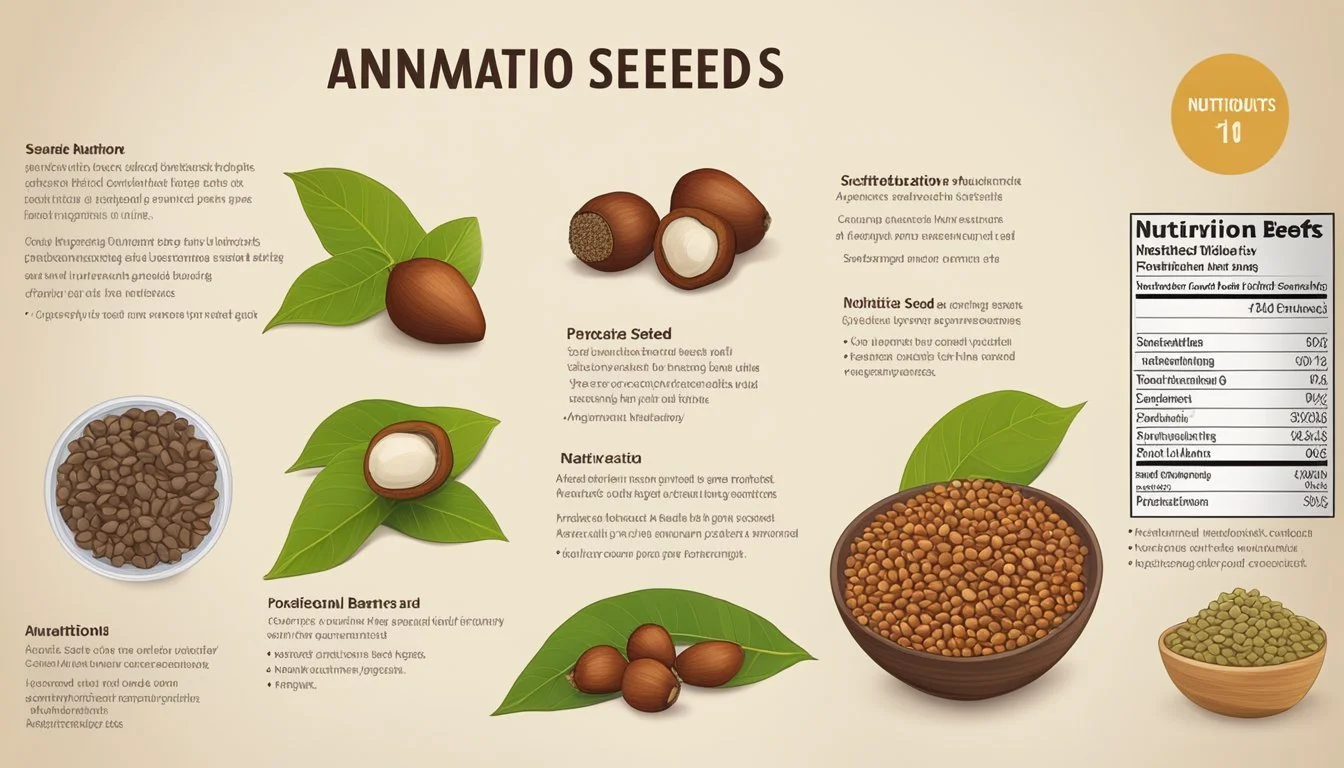What Are the Health Benefits of Annatto Seeds?
Unveiling Nutritional Secrets
Annatto seeds, derived from the achiote tree, have been prized for their culinary and medicinal properties for centuries. These vibrant red seeds are commonly used as a natural food coloring agent, lending a rich hue to a variety of dishes. Beyond their aesthetic contribution to cuisine, annatto seeds are also recognized for their health benefits. They contain several compounds that are believed to be beneficial to human health, including antioxidants like carotenoids, which contribute to their distinct color.
Research suggests that annatto seeds may have anti-inflammatory properties and play a role in eye and heart health. These seeds are also associated with a potential capacity to reduce certain symptoms of illness, such as fever and nausea. The inclusion of annatto in the diet may also help in strengthening bones and promoting healing due to its mineral content and health-promoting properties.
Nutritional Profile and Key Constituents of Annatto Seeds
Annatto seeds, derived from the achiote tree's fruit, are notable for their rich nutritional profile. They contain a distinctive set of compounds that contribute to their color and potential health benefits. Bixin, a carotenoid present in annatto seeds, is responsible for the red pigment and is also a notable antioxidant.
Key Nutrients in Annatto Seeds:
Carotenoids: Annatto is abundant in carotenoids, especially bixin, which may support eye health and act as antioxidants.
Tocotrienols: A form of vitamin E, tocotrienols are found in annatto seeds, known for their antioxidant properties.
Essential Minerals: Annatto provides minerals such as calcium and iron, which are vital for bone health and blood production, respectively.
Here is a snapshot of the key nutritional constituents:
Nutrient: Carotenoids, Benefit: Antioxidant, supports eye health
Nutrient: Tocotrienols, Benefit: Antioxidant activity, supports skin health
Nutrient: Calcium, Benefit: Bone health, nerve transmission
Nutrient: Iron, Benefit: Red blood cell formation, oxygen transport
Nutrient: Dietary Fiber, Benefit: Digestive health
In addition to these primary components, annatto seeds are a source of dietary fiber, which can aid in maintaining a healthy digestive system. The presence of various vitamins and minerals in these seeds suggests a spectrum of essential nutrients that may support the overall functioning of the body.
By incorporating annatto seeds into the diet, individuals may leverage the potential benefits that these seeds can offer due to their nutritional constituents. However, while the seeds' health-promoting prospects are promising, consumption should align with dietary recommendations and an individual's specific health needs.
Health Benefits of Annatto Seeds
Annatto seeds, derived from the achiote tree, have been traditionally valued for their health benefits, which includes protection against oxidative stress and support for heart, skin, and bone health.
Antioxidant Effects and Cancer Prevention
Annatto seeds are rich in antioxidant compounds that help combat free radicals in the body. These antioxidants, such as norbixin, are potentially effective in cancer prevention, particularly in cases related to skin cancer. Research has also suggested antioxidant properties of annatto may contribute to the prevention of age-related diseases.
Cardiovascular Health Support
The antioxidant effects of annatto seeds are believed to aid in heart health by managing cholesterol levels and reducing the risk of heart disease. Certain compounds in annatto have been associated with reducing inflammation, which is a known contributor to cardiovascular complications.
Skin and Eye Health Enhancement
Annatto seeds contain carotenoids that promote skin and eye health. Their effects on the skin may help alleviate signs of aging, such as wrinkles, and support wound healing. In terms of eye health, annatto consumption has been linked to a reduced risk of diseases like age-related macular degeneration and cataracts.
Supporting Bone Strength and Wound Healing
The presence of calcium and other minerals in annatto seeds suggests benefits for bones, including reducing the risk of osteoporosis. Additionally, these seeds have been traditionally used to promote healing of wounds due to their antimicrobial properties and potential to reduce inflammation.
Culinary Uses and Cultural Significance
Annatto seeds, derived from the achiote tree, are prized for both their flavor and vibrant color, which has made them a staple in cooking traditions and food presentation, especially in Latin American and Caribbean cultures.
Annatto in Cooking and Food Presentation
Annatto — often referred to as achiote or atsuete in various cultures — is a natural food coloring agent and condiment that imparts a yellow to red color to food. It is commonly used in the form of annatto oil, which is made by infusing annatto seeds in vegetable oil. This oil is then utilized to color and flavor a variety of dishes, extending from rice, which is natually tinted to a rich orange hue, to cheeses and butter which take on a warm, golden appearance.
In addition to coloring, annatto is used for its flavor profile, which can be described as slightly peppery with a hint of nutmeg. It's typically used in sauces, stews, and marinades, where it complements other ingredients without overpowering them.
Annatto Across Various Cultures
In Latin America, annatto seeds are used prominently in traditional dishes. These regions utilize annatto for its natural dye properties, imparting a distinctive red color to foods like cochinita pibil, a slow-roasted pork dish from Mexico's Yucatán Peninsula.
The influence of annatto spans to Caribbean cuisine where it forms the backbone of the flavor in dishes such as Jamaican jerk chicken and the iconic arroz con pollo. Farther afield, in Central and South America, annatto is indispensable in regional staples, accentuating the culinary tapestry ranging from Brazilian pão de queijo to Venezuelan hallacas.
Whether known as onoto in Venezuela, atsuete in the Philippines, or urucum in Brazil, annatto connects a variety of cultures through its dual role in both taste enhancement and aesthetic appeal in food preparation.
Frequently Asked Questions
Annatto seeds are a natural source of nutrients and have been associated with various health benefits. This section addresses common inquiries about their nutritional content, impact on health, and ways to incorporate them into one's diet.
What specific nutrients are present in annatto seeds?
Annatto seeds contain compounds like carotenoids, particularly bixin, which is responsible for their distinct red color. They are also a source of tocotrienols, a form of Vitamin E.
Can annatto seeds have a positive impact on skin health?
Due to the presence of carotenoids, annatto seeds may help in protecting the skin from oxidative damage and improve its overall health.
What are the potential health benefits associated with consuming annatto seeds?
Constituents in annatto seeds, such as antioxidants, may contribute to several health benefits, including supporting eye health and cardiovascular function and potentially playing a role in reducing inflammation.
Are there any known health risks or side effects related to annatto consumption?
While annatto is generally considered safe, some individuals may experience allergic reactions. Those with known food sensitivities should consult a healthcare provider.
How might annatto seeds be incorporated into a daily diet?
Annatto seeds can be used as a spice or flavoring agent in culinary applications, adding color and a subtle earthy flavor to dishes.
What are the traditional uses of annatto seeds for medicinal purposes?
Traditionally, annatto seeds have been used for their potential digestive and antimicrobial properties and have played a role in the treatment of skin conditions and fevers.



